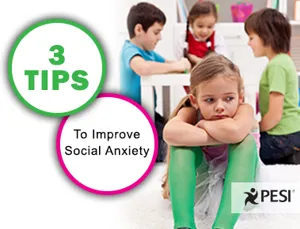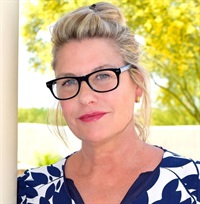3 Tips to Improve Social Anxiety in Young Children

Social anxiety in children can be rather disruptive for a family, therefore having a few cognitive-behavioral activities and resources to quickly offer a family can be of great help to a clinician or school psychologist. Here are three ideas, based in cognitive science, written as a handout for parents, so you can simply print it, discuss it and then provide more individualized strategies as well.
My child appears to be afraid of meeting new friends, going to dance class and even playing with new kids at the park. Why is that so, and how can I help?
Children with social anxiety are uncomfortable exploring new things. Rather than becoming excited by novel opportunities, new places, people and activities, they are more likely to be scared, agitated or withdrawn.
Here are three steps to helping your anxious child.
1. Help your anxious child by previewing what is expected in a new situation. Discuss who will be there, what you will be doing, whether or not you will be at the event with your child and what will happen when the event is completed.
Using your child’s “thinker,” the part of the brain used for decision making and problem solving, will help calm anxiety.
Download the handout: Helping Anxious Children
Lynne Kenney, PsyD, is a mom, pediatric psychologist, international educator and co-author with Wendy Young of BLOOM: 50 Things to Say, Think and Do with Anxious, Angry and Over-the-Top Kids. Lynne integrates neuroscience, nutrition, exercise and music research to enhance brain function and learning in children. For more “Think it Out” “Walk it Out” and “Play it Out” ideas visit www.lynnekenney.com.
My child appears to be afraid of meeting new friends, going to dance class and even playing with new kids at the park. Why is that so, and how can I help?
Children with social anxiety are uncomfortable exploring new things. Rather than becoming excited by novel opportunities, new places, people and activities, they are more likely to be scared, agitated or withdrawn.
Here are three steps to helping your anxious child.
1. Help your anxious child by previewing what is expected in a new situation. Discuss who will be there, what you will be doing, whether or not you will be at the event with your child and what will happen when the event is completed.
- "We'll be going to Sam's house."
- "His mom, dad and brothers will be there."
- "We'll have a bar-b-que and play with toys."
- "When you get to the dance class, you will go in with Miss Clara, and Mommy will watch through
the window." - "I will stay there the entire time."
- "You'll be able to see me."
Using your child’s “thinker,” the part of the brain used for decision making and problem solving, will help calm anxiety.




